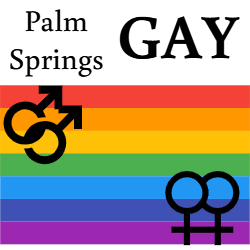Bill was 24 years old when he first underwent ECT. It was 1971 and he had known he was gay since he was 11, but he didn’t tell anyone until he went to a doctor for “help”.
In a darkened hospital room, he was told to choose 40 pictures of men he found attractive and 40 pictures of women. As the images of the men flashed, electricity surged through his body; he got a break with images of women. He reviewed the pictures three times, every Friday, for several months. “I wanted to be honest because I thought it would make life easier,” says Bill, now 74. “But it was just a waste of time.”
Bill was just one of thousands of gay men subjected to aversion or conversion — some by choice, many by force — according to a new book that explores gay history in the postwar period.
John-Pierre Joyce, author of Odd Men Out: Male Homosexuality in Britain from Wolfenden to Gay Liberation, published by Manchester University Press and published on Monday, says he was surprised to learn from his research how widespread were resistance and conversions in Britain. in the 50s, 60s and 70s of the last century. “It’s hard to get exact numbers, but my research suggests that probably thousands of men are undergoing one form of treatment or another during this period,” he says.
The Criminal Justice Act of 1948 may have abolished the hard labor sentence imposed on Oscar Wilde and thousands of others, but it introduced the concept – considered enlightened at the time – of compulsory “medical” treatment as an alternative to prison, Joyce adds. “These treatments were carried out with the encouragement of the state.”
Despite promises to ban conversion practices in the Queen’s Speech earlier this year, they are still not illegal in England and Wales – and in April the government caused outrage when it said the proposed ban would not apply to attempts to change gender identity. The UK Government’s National LGBT Survey shows that 13% of trans respondents have undergone or been offered so-called conversion therapy, almost double the overall average (7%) for other respondents. “Behind these numbers are countless damaged lives,” said a spokesman for the charity Stonewall.
Odd Men Out, the result of 15 years of research and interviews with many men who have since died, is a history of gay men between the appointment of the Wolfenden Committee in 1954, which examined laws relating to homosexuality, to the advent of gay men. Liberation Front in 1970. Joyce says the lack of a total ban on conversion practices points to the importance of knowing history. “People often don’t realize that what they think is normal – including a high degree of liberality and guaranteed rights – has not always been so and may not be so forever.”
Joyce’s exploration of gay men in the post-war period reveals the “treatments” many were subjected to, including “psychotherapeutic drugs” with gay men given LSD and forced to talk about the “conflicts” in their lives that may have led them to become homosexual. Other men went through “chemical aversion” – in which patients were injected with drugs that induce vomiting before being told to look at pictures or films of men. Some inmates were given female hormones to suppress homosexual urges – a treatment prescribed to mathematician and computer pioneer Alan Turing as a condition of his probation following his 1952 conviction for gross indecency.
“I think the younger generations would be surprised at how repressive it was, but also how some people – depending on where they lived and what background they came from – managed to live relatively openly, even if they lived under a law that could turn any time ugly,” says Joyce.
Looking back on the “therapy” he had, Bill, now 74, says he wishes it had included the opportunity to talk. “I think it was crazy. It was absolutely crazy,” he says. “We should just talk to you, help you deal with it, not try to change you. Since you don’t know if it has affected your mind in any way, you can’t know.’
